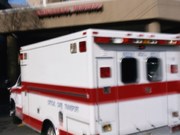Most due to respiratory distress, psychiatric/behavioral emergencies, or seizures
WEDNESDAY, Aug. 15, 2018 (HealthDay News) — The rate of pediatric emergency medical services (EMS) transports from ambulatory practices is 42 per 100,000 children per year, according to a study published in the August issue of Pediatrics.
Matthew L. Yuknis, M.D., from Indiana University in Indianapolis, and colleagues examined pediatric EMS runs originating from ambulatory practices in the greater Indianapolis metropolitan area from Jan. 1, 2012, through Dec. 31, 2014. To validate the matching of pickup location addresses and practice location data, categorize illness types, and categorize interventions performed by EMS, manual review of EMS records was performed.
The researchers found that during the three-year period, 0.85 percent of the 38,841 pediatric EMS transports that occurred originated from ambulatory practices (rate, 42 per 100,000 children per year). Respiratory distress, psychiatric and/or behavioral emergencies, and seizures were the most common illness types. The most common intervention was supplemental oxygen and albuterol; there were few critical-care-level interventions. There was a correlation for community measures of low socioeconomic status with increased number of pediatric emergencies in the ambulatory setting.
“Pediatric emergencies in ambulatory settings are most likely due to respiratory distress, psychiatric and/or behavioral emergencies, or seizures. They usually require only basic interventions,” the authors write. “EMS data are a valuable tool for identifying emergencies in ambulatory settings when validated with external data.”
Copyright © 2018 HealthDay. All rights reserved.








